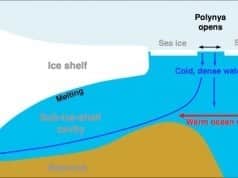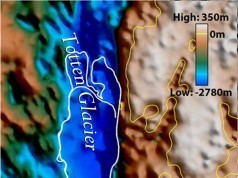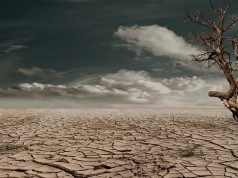Sometimes, one just has to laugh. We humans do seem prone to re-treading old ground. First it’s one fear (global cooling). Then it’s another another (global warming). The language and the details change, but what’s unmistakable is that we’re afraid of Nature. And we should be.
Greens advocate living in harmony with Nature. But how does one live in harmony with a sandstorm, an earthquake, sub-zero temperatures, hailstones, or drought?
Over at his NoTricksZone blog, Pierre Gosselin draws our attention to a lengthy 1974 feature article from Der Spiegel, Germany’s influential weekly news magazine. Gosselin has translated parts of it, and Google’s auto translate feature also communicates the general idea.
The article describes a series of extreme weather events. It then says these events are ominous harbingers of cooler times to come. It reports that ocean temperatures are dropping, that the amount of polar ice is growing, and that the coldest temperatures in 200 years are being recorded at the Arctic Circle. In other words, the article provides a mirror image of the sort of news with which we’re bombarded today.
The article quotes a US expert who says it’s unlikely the planet will return to the warmer temperatures that characterized the 1930s. As in: “The chances.are at best 1 in 10,000.” Tell that to the folks who got hysterical over the (modest but comparable) warming that occurred 15 years later, during the late 1980s.
The article further warns that colder weather will cause crops to fail. It quotes another expert who says that, if things don’t improve, 1 billion people could starve to death. This piece of journalism also makes it clear that the idea that the climate is at the mercy of tipping points is far from new. One of the paragraphs translated by Gosselin reads like this:
One thing climate scientists know for sure- already very small irritations, and for that reason often they are difficult to measure, can throw the global climate out of whack. A reduction of solar radiation of one percent or an increase in the world’s average cloudiness by just 4% is enough to trigger a new ‘big ice age’.
Allow me to rephrase that paragraph:
One thing the public knows for sure is that climate scientists suffer from an exaggerated sense of certainty. They don’t understand squat, but are nevertheless convinced that the smallest hiccup will disrupt the entire climate system. How the planet has managed to remain intact for 4.5 billion years is a mystery.
The moral of this story is that no matter what the weather/climate happens to be doing we humans can’t help ourselves. We’re predisposed to be alarmed by it – and we yearn for someone to tell us what it means.
In earlier times shamans read bones and interpreted entrails. Today scientists construct computer models and pretend they know what they’re talking about.
Additionally, our fears are now perpetually stoked by news outlets. Irrespective of whether the trend is colder or warmer, the media never tires of telling us we should be worried, very worried.






